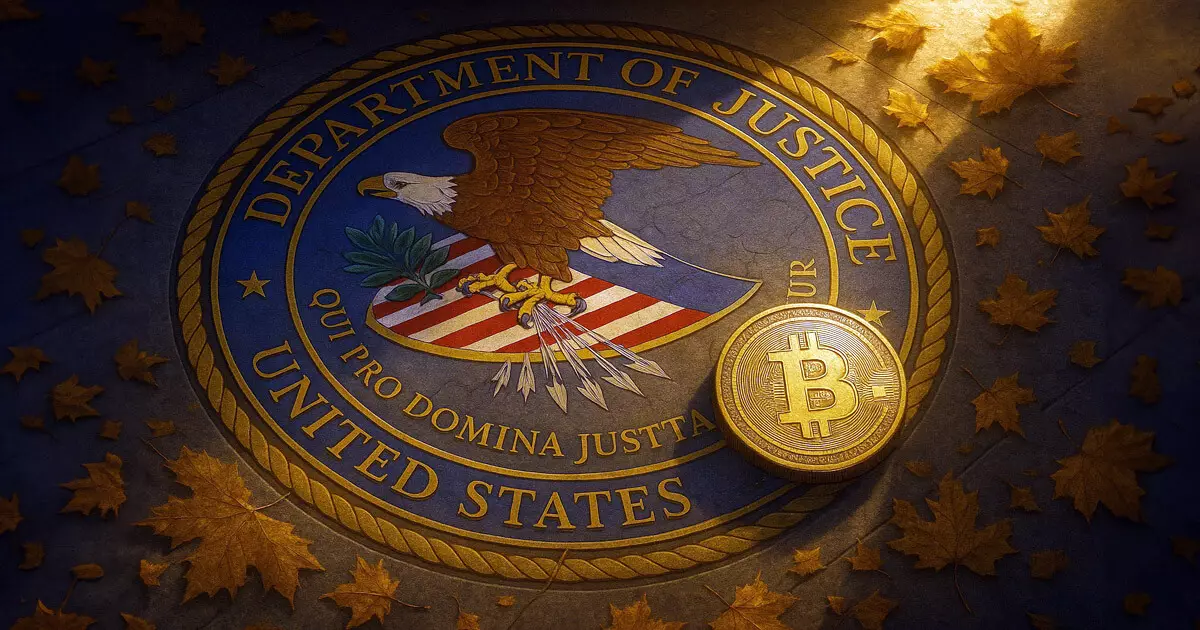The United States Department of Justice (DOJ) has embarked on a crucial reevaluation of how victims of digital asset fraud receive compensation. In a world where the cryptocurrency landscape evolves at lightning speed, the need for agile and modern governance practices has never been clearer. This initiative aims to illuminate the discrepancies inherent in the current compensation framework, particularly spotlighting high-profile bankruptcies like FTX and Celsius.
Outdated Valuation: A Stifling Barrier
One of the most significant issues plaguing victims of digital asset fraud is the outdated methodology used to evaluate claims. The DOJ’s internal memo underscores a crucial concern: when compensating victims, the process currently relies on the asset value at the time claims are filed, often leading to gross undercompensation. Consider those who lost their fortunes during the FTX collapse when Bitcoin traded at under $20,000. Fast-forward to early 2025, and Bitcoin’s price has skyrocketed to over $108,000. This staggering increase highlights a systemic flaw in the compensation protocol, which inhibits victims’ recovery potential and undermines their financial well-being.
Furthermore, we define victimhood in a world navigating the complex waters of an emerging financial ecosystem. These victims aren’t merely numbers; they are individuals with dreams thwarted by the turbulence of the crypto market, and it’s high time their narratives are prioritized over procedural inertia.
The Need for Comprehensive Legal Reforms
An urgent call for regulatory reform resonates across the crypto landscape. The DOJ has acknowledged that existing regulations limit recovery strictly to the initial dollar value at the time of the fraud. This antiquated approach effectively sidelines the intrinsic nature of digital assets, which are dynamic and subject to rapid appreciation or depreciation based on market conditions. It is incumbent upon lawmakers to modernize bankruptcy laws to reflect these realities accurately.
Let’s pivot towards a transformative vision: establishing legal recognition for digital assets akin to traditional financial instruments within bankruptcy laws. As emphasized by advocates such as “Mr. Purple,” integrating digital assets into a contemporary legal framework is a factor that could redefine the very nature of investor protection. Without these reforms, countless victims risk remaining shackled to historical valuations while the broader market surges forward without them.
Shifting Focus from Probing to Protection
In an effort reflective of its commitment to evolve, the DOJ has voiced its intention to change tactics in dealing with digital asset-related crimes. This mindset shift is promising—moving from a predominantly intimidating investigative stance towards a more protective and regulatory-focused approach can foster a healthier ecosystem. By disbanding the National Cryptocurrency Enforcement Team (NCET) and redirecting focus away from lawful entities, the DOJ aims to enhance clarity in the regulatory landscape.
It’s about time we ask: why should legitimate blockchain companies become victims of overregulation when the goal should be to mitigate fraudulent activities without stifling innovation? The balance is delicate, yet it’s essential for the DOJ to prioritize real criminal behaviors—like scams and market manipulation—while allowing compliant entities the space to grow.
Collaboration is Key
The DOJ’s engagement with President Trump’s Working Group on Digital Asset Markets is a significant move that bodes well for the crypto community. Formed under Executive Order 14178, this group stands at the forefront of assessing the regulatory landscape vital for maintaining order within this rapidly changing market. The DOJ’s commitment to providing legal expertise to draft prudent and impactful legislative proposals signals an encouraging shift toward ensuring better investor protection.
The aftermath of digital fraud is traumatic, shrouded in loss and uncertainty. However, with collaborative efforts among regulatory bodies, active revamping of outdated laws, and a commitment to viewing digital assets through a contemporary lens, we can craft a future where investors navigate this brave new world with confidence.
In this volatile market, it’s imperative for regulatory bodies to adapt, protect, and prioritize the needs of investors above all else. The DOJ’s recent initiative can potentially redefine the futures of countless individuals caught in the crosshairs of digital asset fraud, ensuring that their rights and investments receive the respect they inherently deserve. This isn’t just a bureaucratic maneuver; it’s a chance for informed resurgence in a sector begging for legitimacy and protection.


Leave a Reply